Aside from prices, one of the biggest factors that people consider when shopping for basic bumper plates is how durable the lighter, 10-pound plates are. Anyone with a decent chunk of Olympic lifting experience knows that those 10’s are the first plates to end up in the trash due to warping and/or steel inserts popping out. People want to know that whatever brand they end up with is going to include resilient 10-pound bumpers (and to a lesser extent, the 15-pound plates) that can withstand some decent abuse before turning into a taco shell.
Clearly there’s nothing wrong with wanting every single plate in a bumper set to last as long as possible. On this site I continuously recommend the brands of bumpers that I know of to be the most durable simply because it just doesn’t make sense to do it any other way. This is especially true when you consider that quality isn’t even more expensive when it comes to basic bumpers. Be that as it may I think that some folks might still be expecting a bit too much from their 10-pound bumpers.
The fact is that those skinny, 10-pound bumper plates were never meant to be loaded onto a barbell all by themselves and then dropped from an overhead position; they simply aren’t built for it. They would probably hold up pretty well if you could guarantee that the plates on both sides of the bar touched down at the same time every time, but when that barbell falls unevenly and one side hits first, the lateral force on that one plate is just so bad for them.
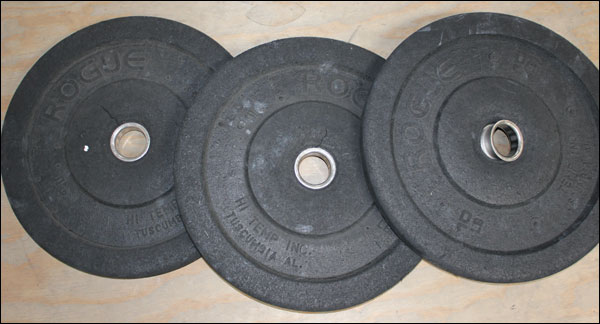
HI-Temp makes some of the best bumper plates around, but even their 10-pound plates can’t take being dropped alone on the bar day-in and day-out. Over time, HI-Temps do seem to hold their shape pretty well, but that insert still pops out rendering them just as useless as a warped import; perhaps even more so.
Granted, some brands have come a long way when it comes to increasing the life of their 10-pound discs when used for training the Olympic lifts and for WODs. They’ve altered the geometry of the edge of the plate to have a larger and flatter surface area, they reinforced the steel insert and the center portion of the plate with an anchor, and they’ve found better, stronger rubber formulas. Still though, if you continue to drop 10-lb bumpers alone on a bar, you will eventually destroy them all the same; regardless of brand or design innovations.
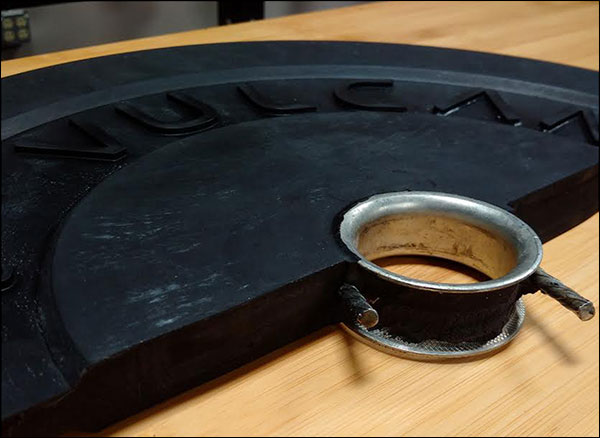
Cross section of a 10-lb Vulcan Bumper Plate showing the hooked insert innovation that helps to prevent insert separation from ever happening.
Does brand even matter then?
Absolutely it does. Improved bumper designs and higher-quality components translates to a longer lasting plate; whether you abuse them or not. It’s much harder to destroy a 45-pound plate than a 10-pound plate (regardless of brand) since the thicker plates don’t really warp or taco, but insert separation is still a real possibility with any size disc. The innovations that help preserve the lighter plates also contribute to longevity of the larger, heavier plates. So yes, brand still matters.
The point I’m really trying to make is this: regardless of brand, don’t drop your 10’s and 15’s alone on the bar unless you’re willing to replace them before their time, and certainly do not add more weight to a bar with only 10’s by using smaller diameter change plates. If you are going to do it anyway, at least buy the more durable brands (like the Vulcan’s seen above) in order to maximize the amount of time you get to spend with them before you trash them.
What to use instead of 10-pound bumpers?
For the record, I’m not telling you that you can’t use your 10- and 15-pound bumper plates for CrossFit or Olympic weightlifting technique; they are your bumpers after all. I’m merely letting you know that they are not intended to be technique plates.
Honestly, I don’t know why a 450 mm, 10-pound bumper plate even exists in the first place. 10’s should just be a smaller, change plate size, not a full-size disc. Manufacturers could avoid a lot of customer-related headaches if they just stopped offering bumpers in 10-pound (full-size) varieties, but I digress.
Update: Vulcan Alphas actually adopted this idea and made the 10’s only 400 mm. Smart!
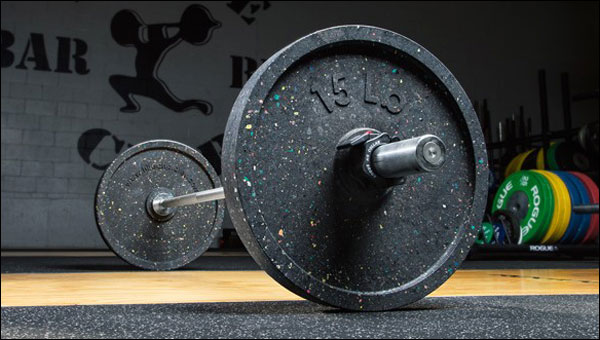
What you should be using for practicing Olympic technique and CrossFit at lower weights are technique plates. Technique plates are full-size plates that are made of a hard, recycled plastic rather than rubber, and they are practically indestructible. They allow you to lift at a light weight, lift the proper distance from the ground, and get the genuine feeling of having plates on the bar, and all without the risk of ruining equipment.
Matter of fact, by using a combination of tech plates, technique bars, and standard Olympic bars, you can train with any weight ranging from 20-pounds to 75-pounds without the use of any bumpers.
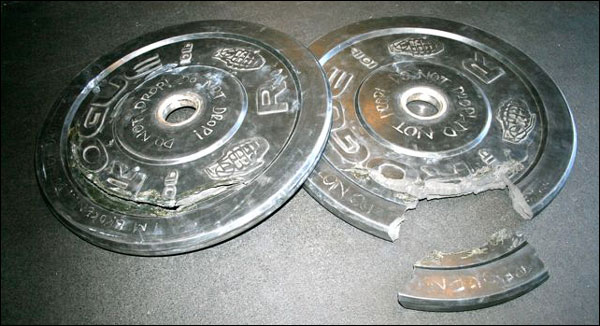
This picture is from CrossFit808 in Hawaii. They have a number of house rules related to the dropping of the 10-pound plates (that are obviously ignored.) They’re not the only affiliate to have such rules, as no one knows broken plates better than a CrossFit affiliate.
The best true tech plates are made by a US company called HiTech. They are available in three sizes in pounds (5, 10, and 15-pound plates), and four different kilogram plates (2.5’s, 3.75’s, 5’s, and 10’s.) You can find these plates from many retailers, and it looks like prices are set by the manufacturer because prices look to be the same everywhere. HiTech plates cost about 3-times the price of a comparable weight bumper plate, but should outlast more than a dozen pairs of same weight bumpers used for the same purpose.
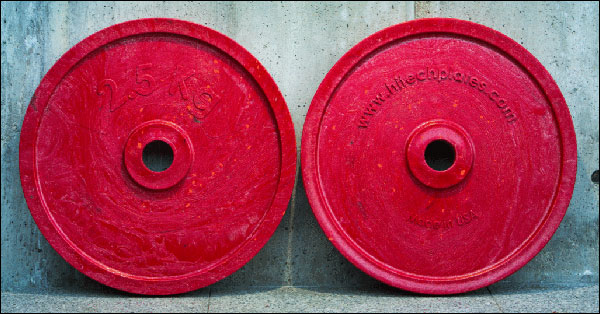
Does any of this matter?
If you’re new to Olympic weightlifting, but not new to strength training in general and you’re a quick learner, you probably don’t need to invest in tech plates. You’ll start training with the bar, add some 10’s, train some more, then be up into the standard comp plate sizes in no time (25+ pounds, or 10+ kilograms.) Go ahead and use your 10-pound bumpers; you may not even be at that weight long enough to do any real damage to them. Even if you do, one extra pair of 10’s is one-third the price of tech plates, so you’re still ahead.
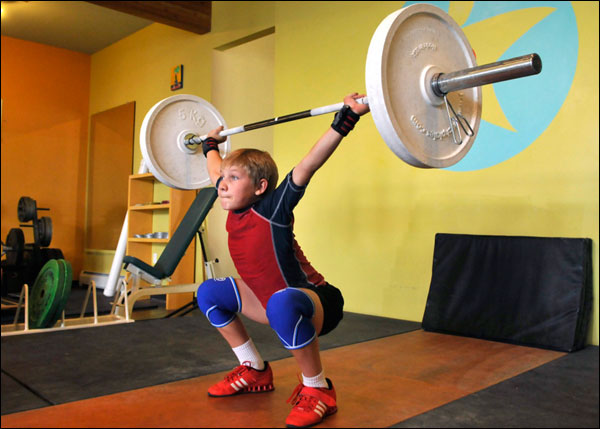
Tech plates are a good buy for youth athletes though since they train in those lighter weight ranges for longer. Tech plates would also be good for master lifters who may have previous injuries or mobility issues that delay the progress, especially since these are the lifters more likely to frequently miss reps. Finally, they are a must in any gym setting that trains novices, either for Olympic weightlifting or just CrossFit. Then again if you run a gym I’m sure I’m not telling you anything you don’t already know.
I also think that tech plates are nice to have around for exactly what the name implies they are for, practicing technique. A 20 kg bar with 10 or 15-pound tech plates is heavy enough to feel a bar in your grasp, but light enough to train repetitive sets. Even experienced lifters that don’t miss reps often will still drop the bar from the waist after a set just to get it out of their hands, and that 2-3 foot drop with basic bumpers is just far enough to start damaging those bumpers. However, tech plates can handle that all day long.
Bumpers versus Tech Plates – Summary
Don’t drop a bar loaded with only 10-pound bumper plates. Either completely set down the bar after each rep, or invest in some tech plates. If you’re willing to risk damage to bumper plates, at least buy good bumper plates with design innovations.
Rogue HG 2.0 plates have a newer, denser rubber compound than their predecessor, and a wide, flat edge. Vulcan plates have these design improvements as well, but they also have the added benefit of anchored inserts that are less likely to separate from the bumper. Any easy way to make sure you get the better plates is to avoid bumper plate brands that have beveled edges on the 10’s (see below.) Also look for reference to an anchored insert in the product description.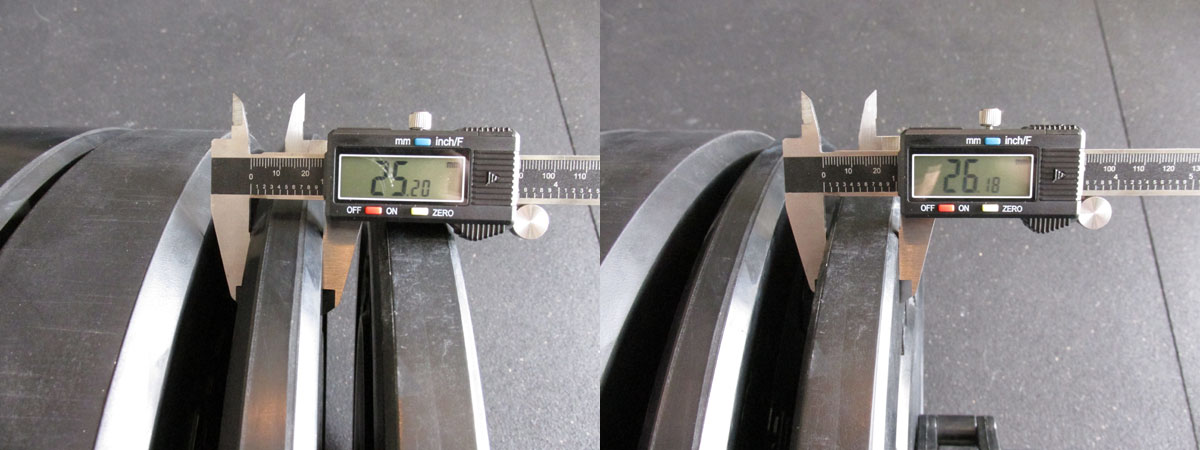
Pendlay (left) and Vulcan (right) 10-lb bumpers. This picture demonstrates that the Pendlay-style has a beveled edge that makes the plate more prone to warping when dropped. The Vulcan has a wider, flatter edge that helps distribute loads over more surface area.
In addition to the Pendlay and Vulcan plates in the picture above, I also have Rogue and HI-Temp basic bumper plates in my gym. While I have had no issues with any brand when it comes to the bigger plates (35’s and 45’s), my Vulcan 10-pound bumper plates have held their shape better than any other brand. I actually do treat them as technique plates from time-to-time, and they are still flat as can be. However, it’s still a risk.

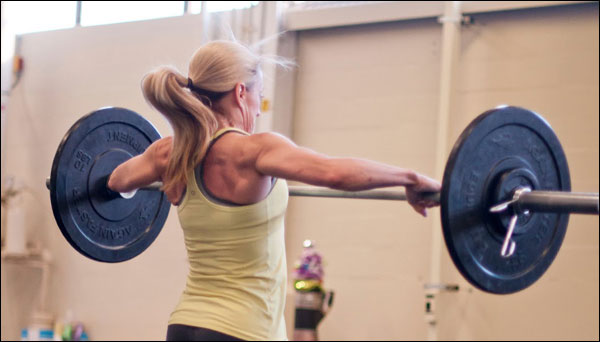
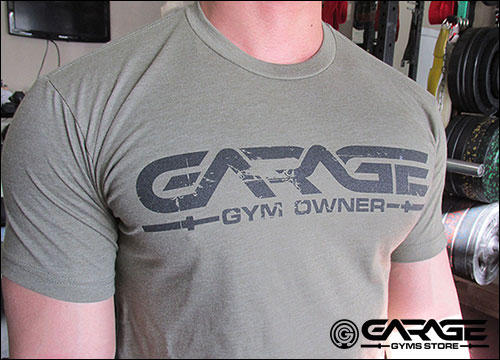
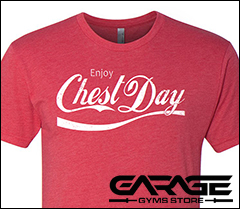
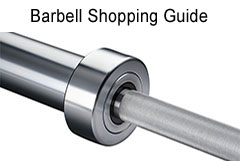
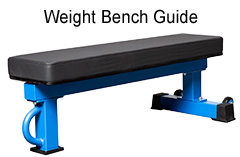
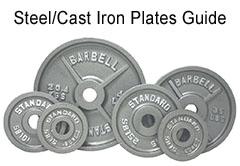
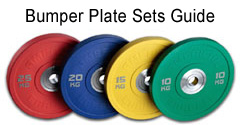
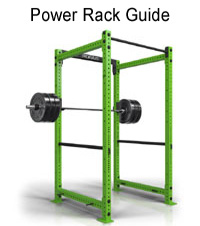
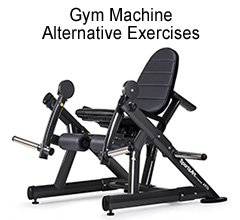

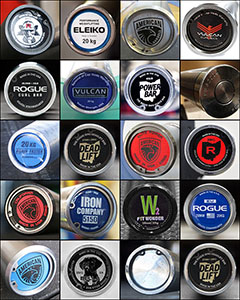

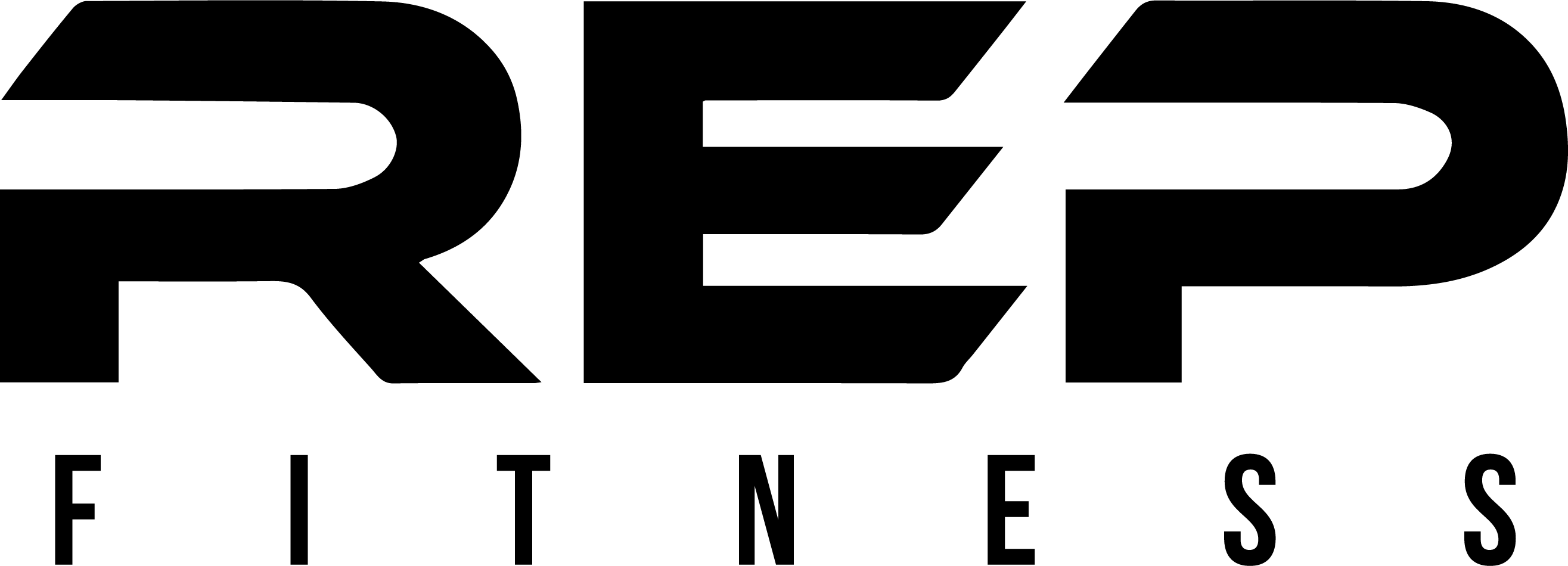
Solid info. I train a couple of neighborhood kids in addition to my own sons and we’re on our second set of 10lb bumpers. Never occurred to me to just buy technique plates instead of bumpers. Would have saved me some time and money apparently!
You sound like the perfect candidate for them. On set three you can look into it =P
Hi,
Does any one know where to buy HiTech plates in europe ?
StrengthShop.de sells technique plates, though they are not HiTech branded. I would suggest emailing American Barbell this question, as they now own HiTech and should know of any distribution on your side of the pond.
Just curious as to what you’d recommend for basic deadlift practice and warmup. Was curious about the difference and found this article. I was thinking I could get away with a pair of 5kgs each side plus up to an extra 30kg on top of the plates. If I ever dropped them it would be from just above knee height. For the most part they would be set down in a controlled manner though
Hey Jay, sorry I’m a little confused. what do you mean by extra 30kg on top of the plates?
I’ll still try and answer though despite my confusion… you really don’t need technique plates for deadlifts. Even if you had to ditch the bar from lockout, it’s still only a couple feet worth of drop. Technique plates are designed to handle being ditched from an overhead position in the jerk or the snatch. It’s also not a very good investment in the sense that even an average person can deadlift a couple hundred pounds, so a warm-up might consist of like 12 reps with just a bar to loosen up, then add at the very least 25-pounds to each side, probably 45’s, and so on. Adding 5 kg/10 pounds per side is almost a waste of energy – you’d be warming up for an hour at those increments. Now, if you’re dealing with an injury, that’s a different story, but, you still really wouldn’t need technique plates. Bumpers are fine. Even steel is fine if you’re not Olympic lifting at all. Steel is louder, so there’s that, but still perfectly fine for power lifts like the dead, squat, and bench.
Basically I have a standard bar with standard sized plates (one inch hole) and a pair of olympic adapter sleeves I got for free from a mate, It isn’t ideal but is all I can afford for now. I was hoping it was feasable to just buy a cheap pair of 5kg bumpers and then some second hand standard olympic plates to add onto the bar with the 5kg bumpers to get me to a total of around 40kg on the bar for practice and warmup purposes. I have 25kg standard iron plates which I can use for deadlifts above 65kg. I was just wondering if it was worth doing while I slowly save for the switch to olympic plates and bars.
Okay, thanks for the info. I’m new to strength training and lifting in general, so I am essentionally just following a linear progression program, including warmups and that. Thank you for your kind and helpful reply
Oh I see. Yeah, I definitely would only invest in 2″/50 mm Olympic plates going forward. I think that you’ll find that a standard 1″ bar will become an issue as your weight progresses, and that will be even more true with adapters. Honestly your best bet for doing this on the cheap would be to do what you said and get second hand Olympic plates – 20 and/or 25 kg plates in steel, and not worry about bumpers at all unless you aspire to move into the clean & jerk and snatch.
In terms of the light warm-ups, I think you’ll notice that your deadlift will go up fairly quickly, and that will automatically take your warm-up sets out of those lighter rangers. It’ll be more like I said, a set with the bar, then straight on to 20 kg+ per side.
I commend you though – making the training work with the equipment that’s available to you. Glad to hear when someone joins the strength training game, and I hope you enjoy it as much as the rest of us do. Good luck Jay.
Thanks, and thank you for your advice and help. It is greatly appreciated.
I’ve been using a Rogue aluminum 5 kg technique bar and two 2.5 kg technique plates for a couple of months now. I’ve put a pair of 445 mm 10 pound Hi Temps next to the 450 mm technique plates, and they seem to ride really well together. Total weight is only 42 pounds, Initial floor contact is always on the tougher big plastic plates, and the thin rubber plates only need to take tiny compression (if any) on landing.
The tech bar maxes out at 45 pounds. After that, the tech plates will go on a standard bar, making 50 pounds… etc.
It’s fun to blast off and become airborne lifting 42 lbs from the floor to overhead.
No drops needed, either!
Rogue posted a write-up about their bar research and concluded that bars last longer with a large amount of, or fat, plates/weight as compared to thin plates. Yes, if you had some gorilla doing high rep drops with 250 kg, the bar (not just the plates) would experience less load than a similar workout loaded to 40 kg!
https://www.roguefitness.com/theindex/article/f-scale-research
I also read this somewhere else before Rogue posted it.
So yes use technique plates, the plates last far longer but so does the bar!
It’s true, and it actually makes sense when you think about it. Still, I’m waiting for someone to tell me what RWH actually is.